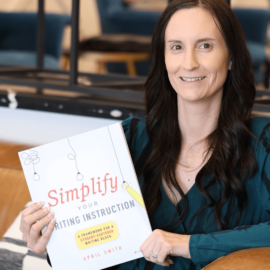If you’re new to project-based learning, or recently went through training, you may find yourself confused about what actually happens during a PBL. The answer is a lot of different things. As students begin to inquire about the things you’ve listed as “need to know” for the project, they will participate in a variety of activities. Keep reading to learn more about the project-based learning structure.
Traditional Lesson Structure
It’s hard to imagine any other way of teaching when we’ve done teach, practice, assess for so long. There’s nothing wrong with this structure at all. What project-based learning allows students to do is to learn and apply skills within a real-world context.

Project-Based Learning Structure
Project-based learning is a different way of structuring your lessons. It can be used with any standards, any subjects, and any period of time. We start with a real-life scenario or problem that is relevant to the students in the class. They then complete in-depth inquiry and a variety of activities while learning skills and standards along the way. They end up with their choice of product(s).
Project-based learning should have the following elements:
- 21st century competencies – problem solving, critical thinking, collaboration, communication, and creativity/innovation
- In-Depth Inquiry – extended, rigorous process of asking questions, using resources, and developing answers
- Need to Know – gain knowledge, understand concepts, and apply skills in order to answer the Driving Question and create final products
- Voice and Choice – students make some choices about the products to be created, how they work, and how they use their time
- Critique and Revision – students give and receive feedback on the quality of their work, leading them to make revisions
- Public Audience – final products are presented to other people, beyond their classmates and teacher.
How do I Adapt to Project-Based Learning?
It might seem scary at first, but most people find it easier than expected after they jump in and start. I have a lot of resources on the blog to help you get started!
Begin by creating a project that focuses on one subject-area, then scatter in a few standards from the other subject areas. It’s a little different for each classroom, but I walk you through it in the blog series below!
Click here to read the blog series “How to Implement Project-Based Learning”.


